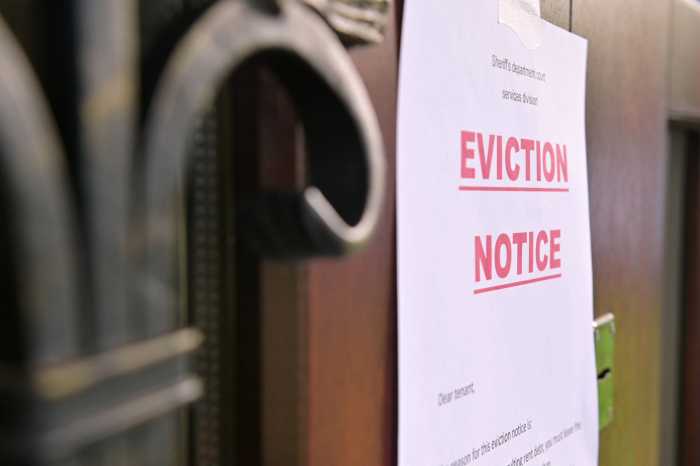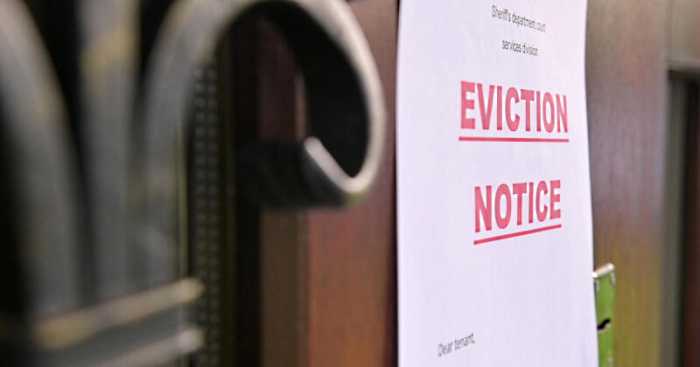The year 2019 was supposed to be a special one for Barbara Sainz. It was the year the 61 year old welcomed a grandson into her owner-occupied, third-floor 610 Wales Ave. apartment in Woodstock.
But Sainz told the Bronx Times that 2019 was also the launching point of a four-year harassment campaign by her landlord Oly Osorio that nearly led to eviction attempts in 2020 and 2023. Sainz alleges that Osorio escalated harassment tactics to get her to leave her apartment, which included racist remarks about her Cuban heritage, interruptions of “essential services” such as an unfixed refrigerator and multiple no-cause calls to NYPD and FDNY to Sainz’ third-floor apartment.
Sainz, who is retired, said without fixes to her refrigerator, she had to put breastmilk for her grandson on ice packs to keep it refrigerated. Ultimately, her daughter and grandson moved into a shelter to escape the harassment.
“Two years of court appearances, two years of putting ice packs in a mini-fridge to keep my grandson’s (breastmilk) cool. She made a hole in the sink well, and there was a mice infestation,” Sainz told the Times through translation. “It’s caused this dark depression. I don’t know what I did to deserve this treatment.”
According to court records, two holdover eviction cases were filed by Osorio in 2020 and January 2023 against Sainz in Bronx County Civil Court’s landlord and tenant division. A holdover eviction is a court case by the landlord against the tenant for a reason other than payment of rent.
What kept Sainz from being evicted was ensured legal representation — thanks to a law that provides tenants who are under 200% of the federal poverty line with access to counsel in housing court — and her Legal Aid lawyer David Singer’s trained eye to catch errors in Osario’s holdover filings.
Osorio’s claims were voluntarily withdrawn due to errors the landlord had made in how the suits were prepared and filed.
“In essence, the landlord didn’t serve the documents starting the case in the proper way,” said Singer. “Had the landlord not made any of the unforced errors it did, Ms. Sainz would have had no way to defend this type of case. ”
Singer was also able to get an order forcing Osorio to make repairs, and delay any eviction attempts until at least June 2023.

Not all tenants are protected
By law, a landlord cannot coerce, harass or intimidate a tenant in an attempt to get a tenant to vacate a rental property. Landlords also can’t make threats against a tenants’ identity or status as a victim of domestic violence or their lawful source of income.
What Sainz experienced, Singer says, is not uncommon. New York landlords can face fines between $3,000 and $11,000 if they are found guilty of harassing their tenants in rent-controlled or rent-stablized units.
Those protections, however, do not expand to tenants of owner-occupied dwellings with fewer than four units, where Sainz lives. Additionally, the heavily supported Good Cause Eviction legislation would not have applied to Sainz’s situation or prevented a future eviction due to the sizing and ownership of her apartment.
“There is state law that has outlawed retaliation against tenants from landlords, but it is less strong than the statutes currently in place, and they do not apply to apartments of Ms. Sainz’s size,” said Singer.
However, Section 8 tenants and voucher holders — who have long been the target of discriminatory housing practices — have legal precedent when it comes to eviction threats. The Williams Consent decree, which stems from a 1997 court case against NYCHA, requires landlords of tenants receiving Section 8 benefits to notify the Section 8 provider of the reasons for the tenant’s eviction.
A Bronx Civil Court judge throw the case out, ruling on March 6 that Osario’s eviction claims violated that decree.
While Sainz desires a better living situation, the borough’s uneasy housing market — rife with income restrictions, landlord hesitancy or refusal to accept Section 8 tenants and lack of accessibility options — has made relocation near impossible.
“I can’t walk up too many stairs, and all the apartments (I’ve looked at) are on higher floors. Most of the owners do not want to accept Section 8 (vouchers) so I’ve felt trapped without anywhere to go,” Sainz said. “I pray to God that I can get out of this apartment and find a home where I feel safe.”
The city has been expanding efforts to handle claims of landlord harassment, including the Mayor’s Office to Protect Tenants, which urges those experiencing landlord harassment to call 311 and call the city’s tenant helpline, which launched in April 2020.
On March 22, the Department of Housing Preservation and Development took a step toward protections against tenant harassment by seeking requests for proposals to identify tenant organizing groups to expand, administer and implement its Partners in Preservation program that launched in 2019. By the end of the pilot program, tenant organizers in Northern Manhattan and the Bronx had canvassed 272 buildings, reaching more than 3,000 units, while organizing 72 new tenant associations.
Some of these efforts have been successful.
Organizers from Community Action for Safe Apartments (CASA) and Northwest Bronx Community and Clergy Coalition (NWBCC) organized tenants at a building on 181st Street, which has been under severe building neglect. Tenants won the installation of a new elevator, upgraded electrical system, painted common areas, and an updated garbage disposal system in their efforts.
Reach Robbie Sequeira at rsequeira@schnepsmedia.com or (718) 260-4599. For more coverage, follow us on Twitter, Facebook and Instagram @bronxtimes
























